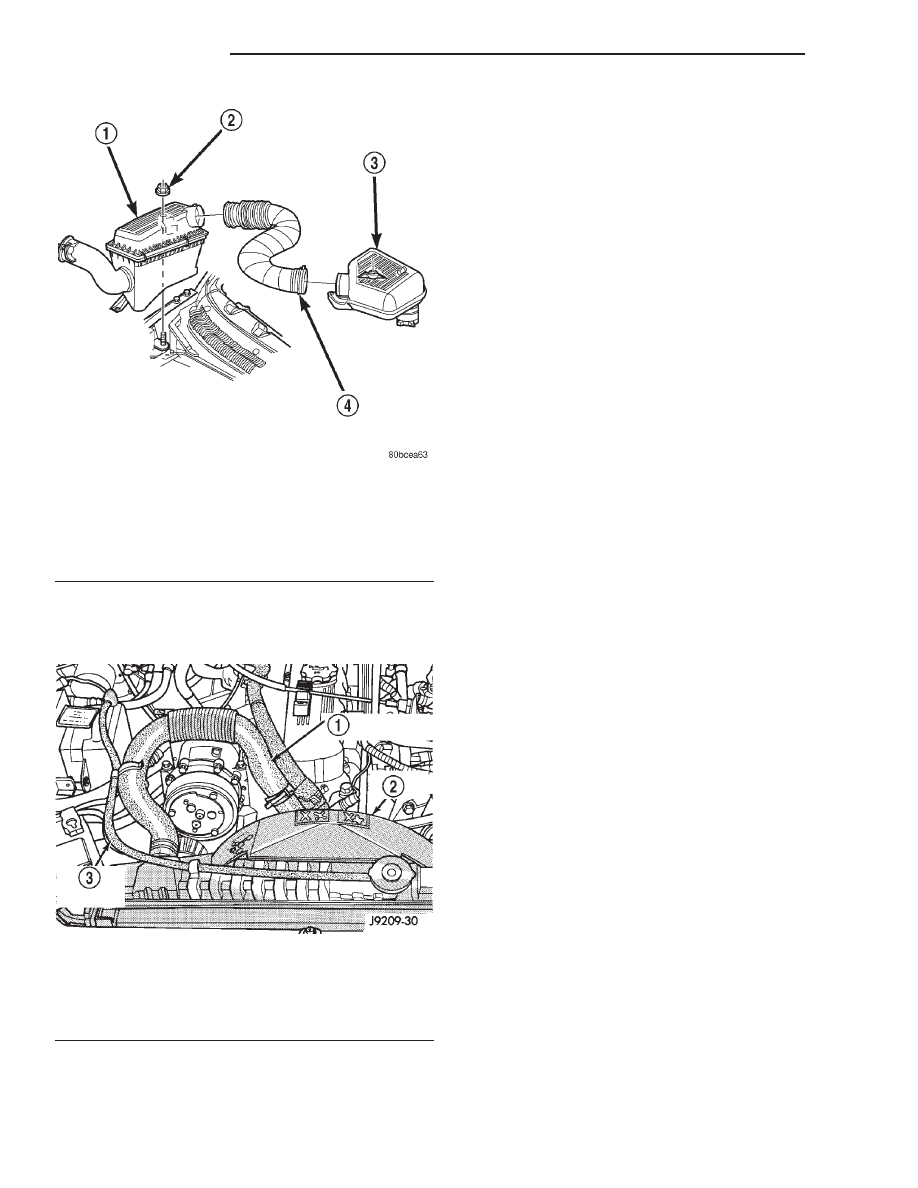Jeep XJ. Manual - part 291

(6) Remove the upper radiator hose and coolant
recovery hose (Fig. 48).
(7) Remove the fan shroud (Fig. 48).
(8) Remove the radiator/condenser (if equipped
with air conditioning).
(9) Remove fan assembly and install a 5/16 x 1/2-
inch SAE capscrew through fan pulley into water
pump flange. This will maintain the pulley and
water pump in alignment when crankshaft is rotated.
(10) Disconnect the heater hoses.
(11) Disconnect the throttle cable, speed control
cable
(if
equipped)
and
transmission
cable
(if
equipped).
(12) Disconnect the body ground at the firewall.
(13) Disconnect the wires from the starter motor
solenoid.
(14) Disconnect all fuel injection harness connec-
tions.
WARNING: THE FUEL SYSTEM IS UNDER A CON-
STANT
PRESSURE
(EVEN
WITH
THE
ENGINE
TURNED OFF). BEFORE DISCONNECTING FUEL
LINES, THE FUEL SYSTEM PRESSURE MUST BE
RELEASED.
(15) Perform
fuel
pressure
release
procedure.
(refer to Group 14, Fuel System for the proper proce-
dure).
(16) Remove latch clip and disconnect the quick-
connect fuel line at the fuel rail
(17) Recover refrigerant (if equipped with A/C).
(Refer to group 24, Heating and Air Conditioning for
proper procedures.)
(18) Disconnect suction/discharge hose from A/C
compressor and cap off ports to prevent intrusion of
foreign material or refrigerant oil loss.
(19) Remove the power brake vacuum check valve
from the booster, if equipped.
(20) If equipped with power steering :
(a) Disconnect the power steering hoses from the
fittings at the steering gear.
(b) Drain the pump reservoir.
(c) Cap the fittings on the hoses and steering
gear to prevent foreign material from entering the
system.
(21) Identify, tag and disconnect all necessary wire
connectors and vacuum hoses.
(22) Raise the vehicle.
(23) Remove the oil filter.
(24) Remove the starter motor.
(25) Disconnect the exhaust pipe from the exhaust
manifold.
(26) Remove the flywheel housing access cover.
(27) Remove the upper flywheel and converter
housing bolts and loosen the bottom bolts.
(28) Remove the engine support cushion-to-engine
compartment bracket bolts.
(29) Remove the engine shock damper bracket
from the sill.
(30) Lower the vehicle.
(31) Attach a lifting device to the engine.
Fig. 47 Air Cleaner and Resonator Removal and
Installation
1 – AIR CLEANER ASSEMBLY
2 – NUT AND WASHER
3 – RESONATOR ASSEMBLY
4 – AIR INLET HOSE
Fig. 48 Upper Radiator Hose, Coolant Recovery
Hose & Fan Shroud
1 – UPPER RADIATOR HOSE
2 – FAN SHROUD
3 – COOLANT RECOVERY HOSE
9 - 32
2.5L ENGINE
XJ
REMOVAL AND INSTALLATION (Continued)